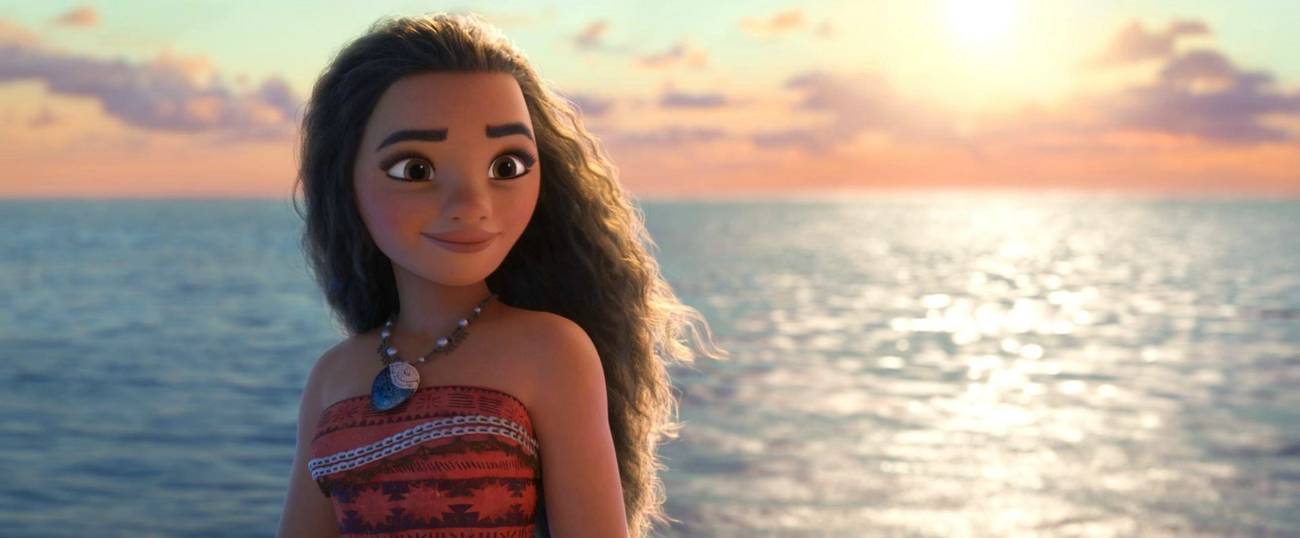Where Is Disney’s Jewish Heroine?
Disney’s newest animated film ‘Moana’ is the latest in a long and recent line of non-Caucasian, lead female characters. So why not a Jewish one?




Disney’s latest full-length animated feature Moana opens nationwide this week. Much of the media interest thus far has focused on the fact that title character is a Polynesian princess, the latest in a growing list of non-Caucasian, lead female characters. Less noticed (so far) is that this is also the latest non-Christian character; Moana’s indigenous faith is a central plot point of the film (“In the beginning, there was only ocean,” says a narrator in the trailer.) Characters drawn from Polynesian cosmology include the demigod Maui and the Lava Witch. Island storytellers were engaged as cultural consultants for the film to ensure verisimilitude.
When Walt Disney began producing animated features in the 1930s and 1940s, with Snow White, Sleeping Beauty, and Cinderella, their religious identity was intentionally downplayed, but those and the ones that followed were all explicitly white and implicitly Christian. That changed in the 1990s, when two Jews, Michael Eisenberg and Jeffrey Katzenberg, began running Disney—long considered the last WASP bastion in Hollywood. The pair intentionally began a process of expanding the religious, racial, and ethnic spectrum of animated central characters.
For the first time, the heroines (and heroes) included a Catholic (The Hunchback of Notre Dame), an Arab (Aladdin), a Chinese Confucian (Mulan), a Hawaiian girl (Lilo and Stitch), a Native American animist (Pocahontas), and an Inuit (Brother Bear). In 2009, the groundbreaking centerpiece of The Princess and the Frog was an African American adherent of Voodoo. This was seen by many as a belated corrective for pervasive racist imagery of African Americans, like the black crows in Dumbo. Jews like Alan Menken and the late Howard Ashman, whose influence on Moana is apparent, were responsible for much of the musical success of several of Disney’s animated features. Yet Eisner and Katzenberg, like the early Jewish Hollywood studio pioneers, steered clear of Jewish subjects and identifiably Jewish leading characters. (The only nominal exceptions were third bananas like Gilbert Gottfried’s fast-talking parrot Iago in Aladdin, and honorary member of the tribe Nathan Lane’s Timon the meerkat in The Lion King.) Katzenberg had to start his own studio (SKG Animation) to make his Moses epic, Prince of Egypt.
Walt Disney’s one encounter with a Jewish character became infamous: the peddler in the 1933 cartoon, The Three Little Pigs, in the Silly Symphonies series. In its original version, the Big Bad Wolf disguises himself as an obviously Jewish peddler with a large, hooked nose, bushy black beard, and a Yiddish accent. Roy (and then Walt) Disney denied there was any anti-Semitic intent in the characterization, despite complaints from the American Jewish Congress, who called the portrayal “vile” and “revolting.” Using what would become a familiar trope in the face of charges of anti-Semitism, Roy said, “We have a great many Jewish business associates and friends and certainly would avoid purposely demeaning the Jews or any other race or nationality.” Nonetheless, after World War II and the Holocaust, the cartoon was quietly reedited to make the wolf into a Fuller Brush man, with what sounds like an Irish accent. There have been other, more personal clashes between Disney and the Jews. During the studio’s infamous animators’ strike in 1941, Jewish artists—led by Art Babbitt (Babitsky)—clashed with Walt, with Walt and Babbitt nearly coming to blow on the picket line. Still, in 1955, the Beverly Hills chapter of B’nai B’rith named Walt its “Man of the Year.”
Isn’t it time that Disney gave us a Jewish princess? With Disney again under Jewish leadership, in the person of Robert Iger, with its efforts to foster diversity and multiculturalism, shouldn’t it include a Jewish princess. I suggest a positive, inspiring role model—a typically plucky, young, selfless, non-materialistic, Torah-observing heroine who might serve as an exemplar. Although Disney animators have preferred myths and fairy tales over Bible stories as source material, Queen Esther might be an excellent candidate.
Mark I. Pinsky is author of The Gospel According to Disney: Faith, Trust and Pixie Dust.